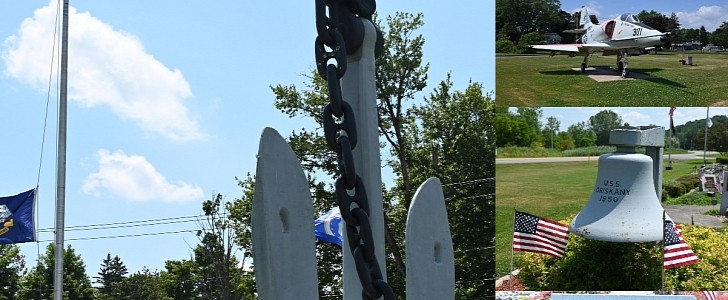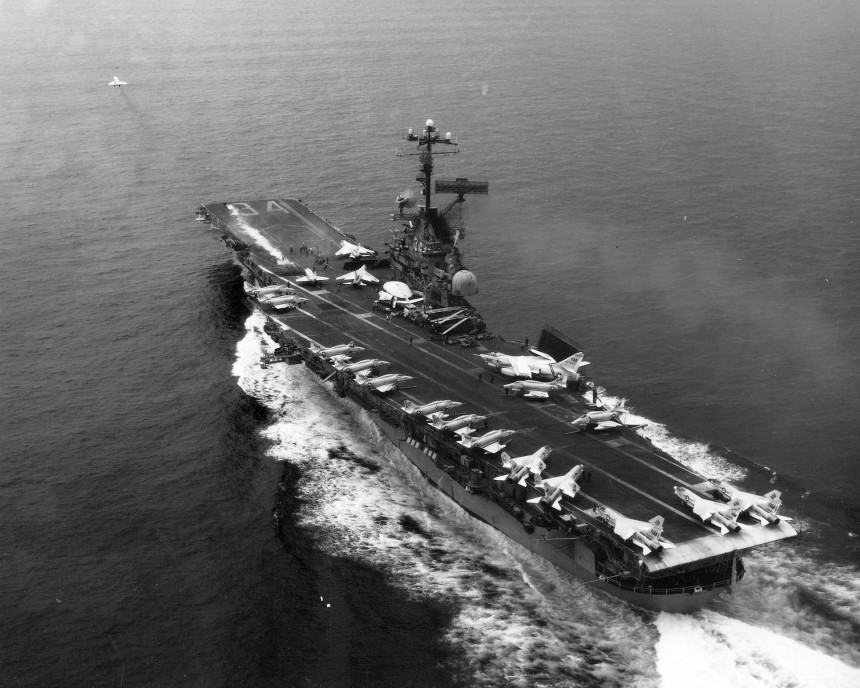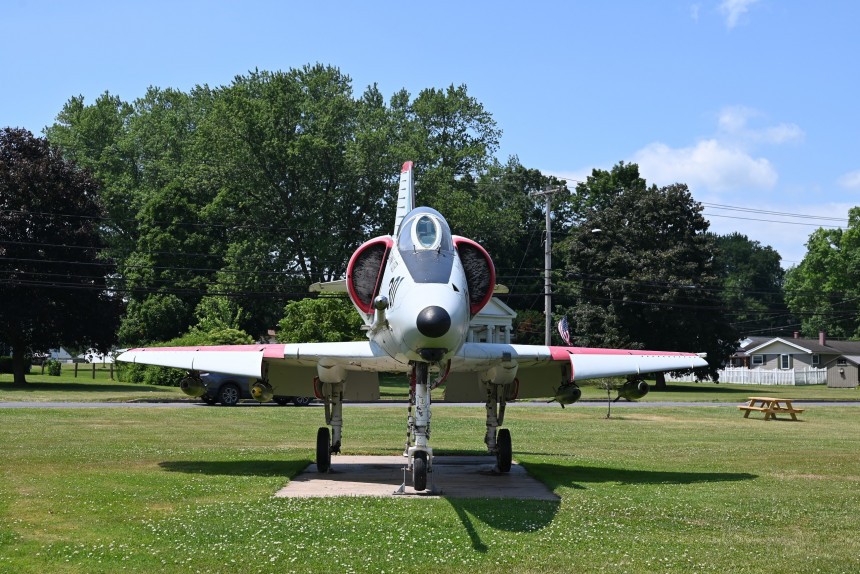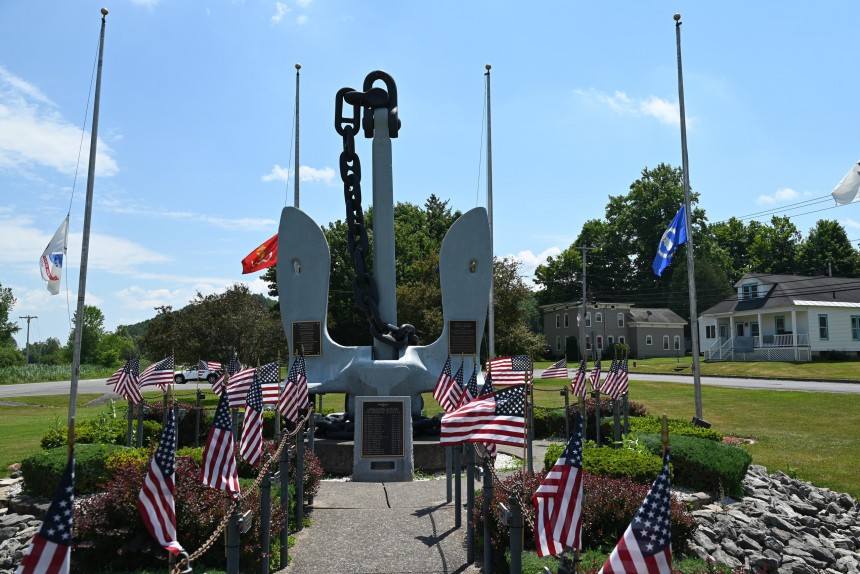Most warships are never appreciated by the greater public for their years of service on the high seas serving their country. A very select few might get to live life eternal as museum ships. But only one American vessel had the honor of being repurposed for something else entirely for the first time.
The ship in question is the USS Oriskany. An Essex class aircraft carrier that arrived a little too late for World War II but was a stalwart of the American Naval fleet for nearly four decades from Korea to Vietnam. Today, only a few trinkets from the mighty ship remain from its days serving the U.S. Navy fleet. It's all located in the Central New York Villiage of Oriskany that gave the ship its name.
Located at 420 Utica Street, the Oriskany Museum, just a few miles from Griffiss International Airport, chronicles the remarkably checkered and vibrant history of this little town less than ten miles away from the major city of Utica. On these hallowed grounds, the Continental Army battled the Army of Great Britain to a bloody stalemate during the American Revolutionary War. Clearly, this town is befitting having its name laid upon one of America's premiere fighting vessels.
The Mighty-O, as it was called, was one of the last vessels, civilian or military, to be manufactured at the historic Brooklyn Navy Yard in New York City. It arrived in the seas of East Asia to aid in the Korean Conflict between the Chinese and Soviet-backed North Koreans and the NATO/United Nations-backed South Koreans on October 17th, 1952. Serving with joined Task Force 77 throughout the fighting. F4U Corsair piston fighters in Oriskany's ranks managed to shoot down at least two MiG-15 jet fighters and damage at least one more during the war.
In between Korea and Vietnam, Oriskany provided air support for Marine Corps amphibious assault training on the Island of Iwo Jima. During this time, the ship called San Diego's Naval Yard its home port and conducted numerous military training exercises in NATO-friendly waters, most notably from Okinawa to the Philippines. During this time, the Mighty-O had its catapults upgraded to new steam-powered units capable of launching newly arriving jet fighters off its decks.
By 1966, the USS Oriskany was sailing the waters of the Gulf of Tonkin. The flashpoint where open warfare between the Soviet-funded North Vietnamese and the U.S./Australian-backed South Vietnamese more or less officially began. On the morning of October 26th that year, a magnesium signal flare accidentally ignited on the ship's hangar number one, killing 44 sailors and injuring many more.
After repairs in June 1967, the ship once again departed full steam ahead towards the waters off Vietnam. During the Vietnam War, the Mighty-O launched Vought F-8 Crusaders, Douglas A-4 Skyhawks, and Grumman E-1 Tracer AWACS airplanes from its decks. It would be the final wide-scale conflict the Mighty-O would see battle in, decommissioning from the Navy's official fleet on September 30th, 1976, and struck from the registrar in 1989.
And so, the mighty USS Oriskany sat in a state of limbo, sold for scrap in 1996 but ultimately spared because the startup company delegated to its recycling failed to produce satisfactory results. In April 2004, the Navy announced the USS Oriskany would be stripped down to a bare metal floating hulk and converted into the world's largest artificial reef. It was the first American warship to be given this fate.
The ship was towed to Corpus Christi, Texas, in January 2004. There, it began a grueling decontamination project to ensure no toxic chemicals or hazardous byproducts made their way into ocean waters. This shockingly thorough process took 18 agonizing months to ensure it was completed properly. By June 2005, the Oriskany was ready to be towed to its final resting place off the coast of Pensacola, Florida.
All it took was a strategically placed 500 pounds (226 kg) of C-4 explosives, barely the weight of a single bomb, to send the ship 210 feet (64 meters) down into the Gulf of Mexico on May 17th, 2006. Sinking in a little over half an hour and becoming the first American warship to be used as the base for an artificial reef.
To this day, the sight still serves as a popular tourist destination for divers looking for a thrilling dive not far from U.S. Soil. As for what remains, the USS Oriskany Museum's cornerstone is a single Douglas A-4 Skyhawk, the very same the likes of future American presidential candidate John McCain flew into battle with. It's also loaded up with a similar array of bombs it would have carried into combat during Vietnam for that extra authentic kick.
It's flanked by the same bell that sat on the Captain's bridge, surrounded by well-maintained foliage and American flags planted by museum volunteers. Nestled in its own self-contained section of the museum is the Oriskany's massive main anchor, complete with a commemorative plaque displaying a list of every one of the ship's captains.
Sitting not far away is a special monument dedicated to all personnel who gave their lives while serving on the ship during the Korean War, the Vietnam War, and during peacetime. This little outdoor museum reminds residents they have loads to be proud of in an otherwise quaint little Central New York town.
Check out more from our trip to the Utica-Rome Area and the area around the former Griffiss Air Force Base here on autoevolution.
Located at 420 Utica Street, the Oriskany Museum, just a few miles from Griffiss International Airport, chronicles the remarkably checkered and vibrant history of this little town less than ten miles away from the major city of Utica. On these hallowed grounds, the Continental Army battled the Army of Great Britain to a bloody stalemate during the American Revolutionary War. Clearly, this town is befitting having its name laid upon one of America's premiere fighting vessels.
The Mighty-O, as it was called, was one of the last vessels, civilian or military, to be manufactured at the historic Brooklyn Navy Yard in New York City. It arrived in the seas of East Asia to aid in the Korean Conflict between the Chinese and Soviet-backed North Koreans and the NATO/United Nations-backed South Koreans on October 17th, 1952. Serving with joined Task Force 77 throughout the fighting. F4U Corsair piston fighters in Oriskany's ranks managed to shoot down at least two MiG-15 jet fighters and damage at least one more during the war.
In between Korea and Vietnam, Oriskany provided air support for Marine Corps amphibious assault training on the Island of Iwo Jima. During this time, the ship called San Diego's Naval Yard its home port and conducted numerous military training exercises in NATO-friendly waters, most notably from Okinawa to the Philippines. During this time, the Mighty-O had its catapults upgraded to new steam-powered units capable of launching newly arriving jet fighters off its decks.
After repairs in June 1967, the ship once again departed full steam ahead towards the waters off Vietnam. During the Vietnam War, the Mighty-O launched Vought F-8 Crusaders, Douglas A-4 Skyhawks, and Grumman E-1 Tracer AWACS airplanes from its decks. It would be the final wide-scale conflict the Mighty-O would see battle in, decommissioning from the Navy's official fleet on September 30th, 1976, and struck from the registrar in 1989.
And so, the mighty USS Oriskany sat in a state of limbo, sold for scrap in 1996 but ultimately spared because the startup company delegated to its recycling failed to produce satisfactory results. In April 2004, the Navy announced the USS Oriskany would be stripped down to a bare metal floating hulk and converted into the world's largest artificial reef. It was the first American warship to be given this fate.
The ship was towed to Corpus Christi, Texas, in January 2004. There, it began a grueling decontamination project to ensure no toxic chemicals or hazardous byproducts made their way into ocean waters. This shockingly thorough process took 18 agonizing months to ensure it was completed properly. By June 2005, the Oriskany was ready to be towed to its final resting place off the coast of Pensacola, Florida.
To this day, the sight still serves as a popular tourist destination for divers looking for a thrilling dive not far from U.S. Soil. As for what remains, the USS Oriskany Museum's cornerstone is a single Douglas A-4 Skyhawk, the very same the likes of future American presidential candidate John McCain flew into battle with. It's also loaded up with a similar array of bombs it would have carried into combat during Vietnam for that extra authentic kick.
It's flanked by the same bell that sat on the Captain's bridge, surrounded by well-maintained foliage and American flags planted by museum volunteers. Nestled in its own self-contained section of the museum is the Oriskany's massive main anchor, complete with a commemorative plaque displaying a list of every one of the ship's captains.
Sitting not far away is a special monument dedicated to all personnel who gave their lives while serving on the ship during the Korean War, the Vietnam War, and during peacetime. This little outdoor museum reminds residents they have loads to be proud of in an otherwise quaint little Central New York town.













